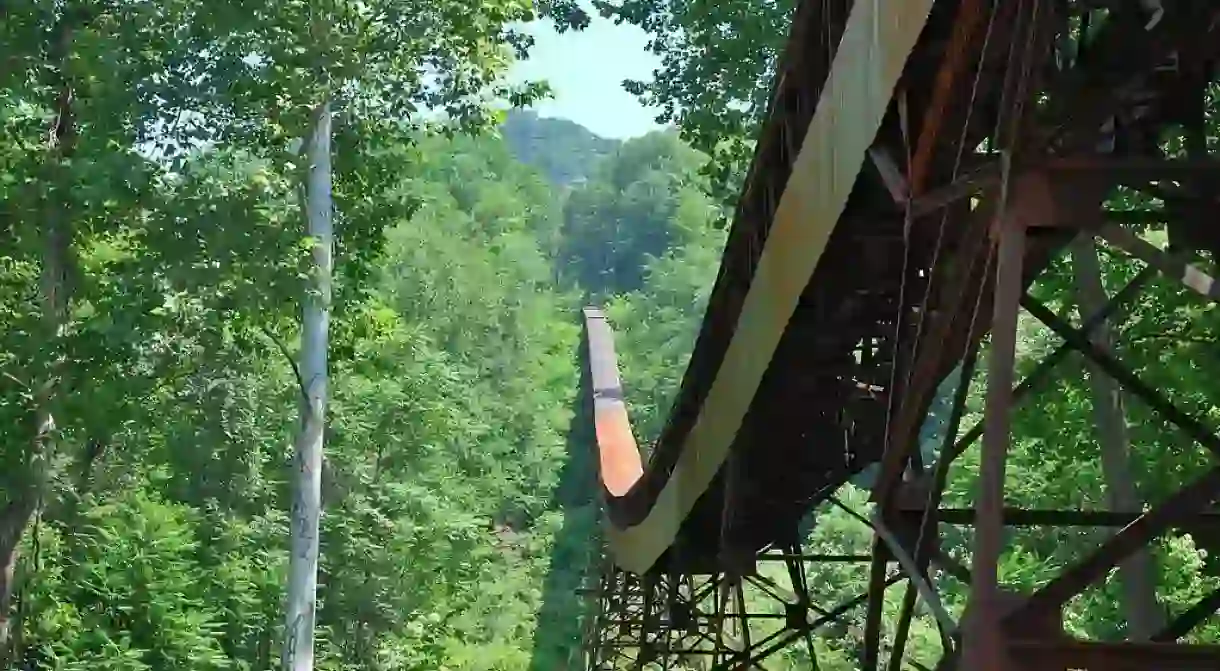A Guide to the National Coal Heritage Area in West Virginia

Although coal mining is found across the southern Appalachian mountains, the history of the coal mines has become central to West Virginia’s identity. In 1996, a large region of southern West Virginia was designated as a National Heritage Area to help protect and interpret that history for future generations. Learn more about the unique attractions in the National Coal Heritage Area.
The National Coal Heritage Area
The Heritage Area was officially created in 1996, and is one of 40 national heritage areas in the country. The areas are designated by the National Park Service as a partnership between the government and private ownership to protect historical sites and the heritage of areas in the United States. In West Virginia the NCHA encompasses 13 counties in southern West Virginia, and seeks to preserve buildings and interpret the history of coal in the region. You can travel throughout the area using the county maps and driving tours, or check out these top five museums.
The Canyon Rim Visitor Center
Museum

Thurmond Depot Visitor Center
Museum

Located in the old Chesapeake and Ohio Railroad station, the Thurmond Depot Visitor Center is a place to learn about the interaction of the coal industry and the railroads. Right on the New River, the visitor center has exhibits about the arrival, boom, and eventual decline of rail in West Virginia, and still serves as an Amtrak stop.
Beckley Exhibition Coal Mine
Museum

In Beckley, West Virginia, you can experience what a coal mine is actually like through the Exhibition Coal Mine. Go underground in a rail-car and hear first-hand from a retired miner about what life digging coal was actually like, and how the process has changed over the last century. You can also visit a recreated early 20th-century coal mining town with a company house, the superintendent’s home, the Pemberton Coal Camp Church, and the Helen Coal Camp School.
The West Virginia Mine Wars Museum
Museum

From 1912 to 1921, tensions between coal mine operators and coal miners were high, and the conflicts that happened between these years have become known as the Mine Wars. The coal miners wanted to unionize for better working conditions, while the operators hired private detectives to make sure that workers didn’t join unions or strikes. The West Virginia Mine Wars Museum (open only during the summer) in Matewan, West Virginia explores the history of these conflicts through the lives of everyday people. You can also visit the sites where conflicts occured such as Blair Mountain, Cabin Creek, Paint Creek, and the Matewan Depot.
Whipple Company Store and Appalachian Heritage Museum
Museum

At the Whipple Company Store, discover the secrets of the coal camp that you might not learn other places. During a guided tour, the restored architecture of the building reveals hidden safes, back rooms, and basements, that were all part of the culture of having a town entirely run by a company. The museum guides are well-experienced in the history of the area, and share stories they’ve heard from coal miners and their families over the years.













